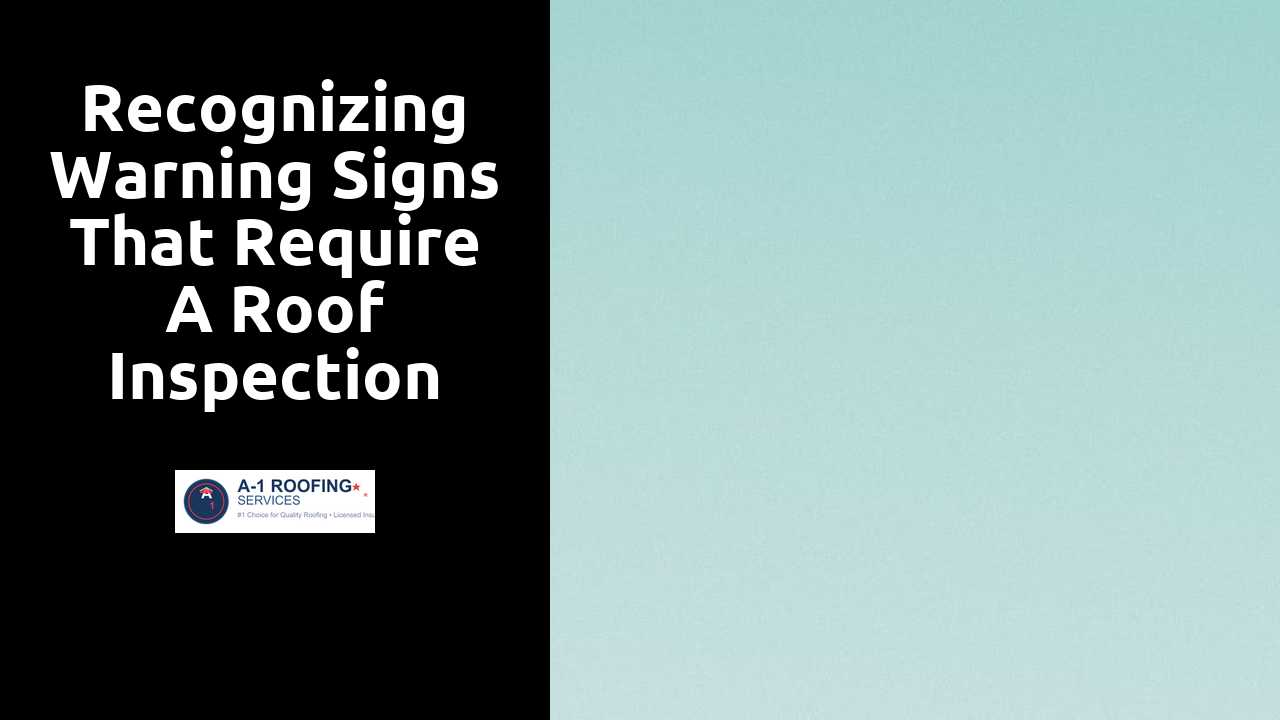
Recognizing Warning Signs That Require a Roof Inspection
Table Of Contents
Roof Age and Inspection Necessity
The lifespan of a roof varies significantly depending on the materials used and environmental factors. Asphalt shingles typically last around 20 years, while metal roofs can endure for 50 years or more. Homeowners should be aware that as roofs approach the end of their expected lifespan, they become more vulnerable to wear and tear. Regular inspections become essential to identify any deterioration even before it becomes a visible problem.
Even roofs that are relatively new can develop issues due to installation errors or unexpected weather events. Periodic evaluations help catch hidden problems such as leaks or structural damage early on. Homeowners who make it a habit to check their roofs regularly tend to save money in the long run by addressing minor issues before they escalate into costly repairs.
Continue to read this blog post for more great tips.
How Age Affects Roof Integrity
The lifespan of a roof varies significantly depending on the materials used and the local climate. Typical asphalt shingles last around 15 to 30 years, while metal and slate roofs can endure for several decades longer. As roofs age, they become more susceptible to damage from environmental factors such as UV exposure, extreme temperatures, and heavy precipitation. This wear and tear can lead to weakened structural integrity, making it essential for homeowners to monitor their roof's age closely.
Regular inspections become increasingly important as roofs reach the latter stages of their expected service life. An aging roof may exhibit signs of deterioration like curling shingles, granule loss, or leaks. These indicators signal potential problems that could escalate if not addressed promptly. Homeowners should remain vigilant and proactive about having their roofs inspected as they age to ensure safety and to avoid costly repairs down the line.
Shingle Condition as a Key Indicator
The condition of shingles plays a crucial role in determining the overall health of a roof. Age, weather exposure, and physical damage can all lead to compromised or missing shingles. Curling, cracking, or granule loss are common signs indicating that shingles may no longer be providing adequate protection. Homeowners should conduct regular visual inspections to identify these issues early, preventing more extensive damage and costly repairs.
In addition to visible wear, the type of shingles can impact their durability. Asphalt shingles, for instance, can be affected by extreme temperature fluctuations. Regular checks after significant weather events can help catch problems before they escalate. Ensuring shingles are in good condition not only enhances aesthetic appeal but also fortifies the roof’s ability to shield the home from environmental elements.
Assessing Shingles for Damage
Inspecting shingles for damage is essential to maintaining a healthy roof. Homeowners should look for signs such as curling, cracking, or missing shingles. These issues can lead to additional problems, including leaks and water damage. Any discoloration or granule loss may also signal that the shingles are reaching the end of their lifespan and may need replacement.
In addition to visible signs of wear, performance aspects should be assessed. A properly functioning roof will shed water efficiently, reducing the likelihood of pooling and ice dam formation. If shingles appear warped or are lifting at the edges, this may indicate inadequate sealing or improper installation. Regular inspections can help identify these problems early, preventing costly repairs down the road.
Gutter Function and Maintenance
Proper gutter function is essential for roof health. They serve as a drainage system, directing water away from the roof and foundation. When gutters become clogged with debris such as leaves and dirt, it can lead to water overflow. This overflow can cause damage to the roofing materials and even promote the growth of mold and mildew.
Regular maintenance of gutters is vital to prevent these problems. Cleaning them at least twice a year ensures they remain free of blockages. Downspouts should also be checked to make certain water is flowing freely. Neglecting gutter upkeep can lead to more significant issues, including water damage to both the interior and exterior of a home. Regular maintenance encourages longevity, ultimately protecting your investment.
The Role of Gutters in Roof Health
Gutters serve a critical function in directing rainwater away from the roof and foundation of a house. Clogged or damaged gutters can lead to water overflow, which may cause significant structural issues. Water pooling near the eaves can seep beneath shingles, promoting mold growth and weakening roofing materials over time. Regular maintenance of gutters is essential to prevent these problems and extend the lifespan of the roof.
When gutters function properly, they play a vital role in protecting the home's overall integrity. They help to prevent damage to siding, windows, and landscaping. Keeping gutters clear of debris allows for optimal drainage, reducing the risk of water-related damage. Homeowners should regularly inspect and clean their gutters to ensure they are in good working condition and effectively safeguarding the roof and surrounding areas.
Related Links
The Impact of Weather on Roof Inspection TimingCommon Issues Found During Roof Inspections